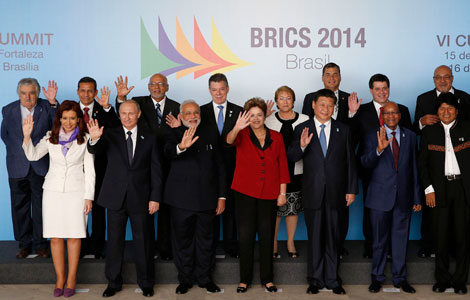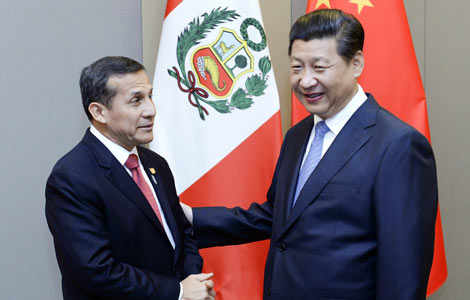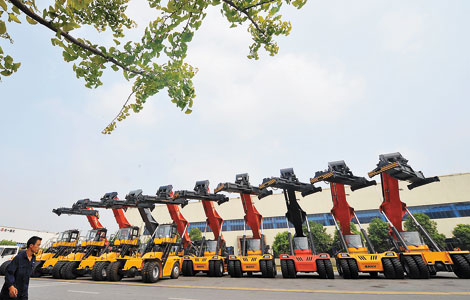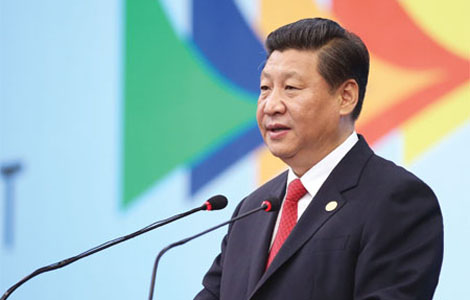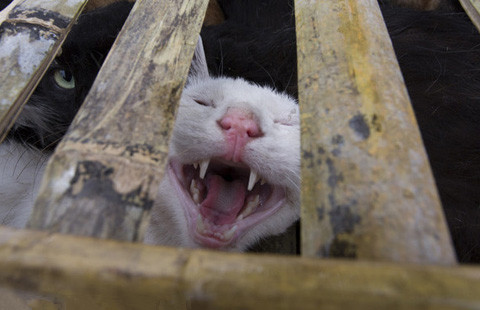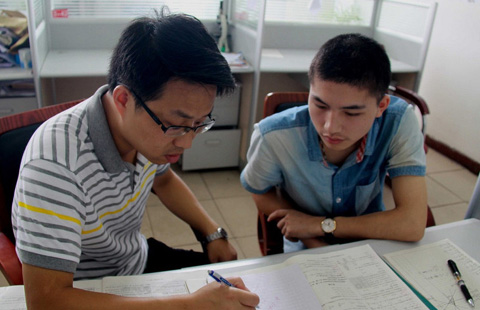Hot Words
Updated: 2014-07-18 07:10
(China Daily USA)
|
||||||||
BRICS bank 金砖银行 (jin zhuan yin hang)
The BRICS - referred to as jin zhuan or golden bricks in Chinese - held its sixth summit on July 15-16 in the Brazilian cities of Fortaleza and Brasilia, where agreements were signed for creating a Contingency Reserve Arrangement worth $100 billion and establishing a $50-billion New Development Bank.
The creation of the contingency reserve is aimed at helping the BRICS countries - Brazil, Russia, India, China and South Africa - better withstand short-term liquidity pressure and overcome the risks arising from any international financial turbulence. And the establishment of the development bank, or yin hang in Chinese, will finance infrastructure projects.
The initiatives, announced at the BRICS summit in New Delhi in 2012, have finally become a reality, which in the long run will help break the monopoly of the Bretton Woods institutions such as the World Bank and International Monetary Fund in the international financial order.
The worse-than-expected performance of the BRICS economies in the recent past has dented their growth-rate estimates and resulted in the perceived waning influence of emerging economies in the international community, with a big question mark hanging over the mechanisms for cooperation among the five BRICS member countries. Such concerns may appear reasonable but are not well founded. Economic activities have slowed down across the BRICS countries, but for different reasons.
The slowdown in the Chinese economy is intentional, as China's policymakers have embarked on the mission to change the country's three-decade-old quantitative growth model to a mode that focuses on qualitative growth. The slowdown in the Russian economy is in part the result of the Western sanctions imposed on Moscow over the Ukraine crisis. And to a great extent, the slowdown in the economic growth of Brazil, India and South Africa is closely related to the changes in the monetary policies of developed economies. Thus the slowdown in the growth of BRICS economies can be attributed mostly to short-term factors.
Although the primary sector, including farming and forestry, and secondary sector, including manufacturing and construction, still dominate the industrial structures of BRICS, the five economies have not fully tapped these two sectors' potential for growth. For instance, they are yet to upgrade their industrial structures, promote sustainable economic growth and deepen comprehensive economic cooperation.
Once the BRICS countries do that, the results would be remarkable both on the economic and political fronts. Just as President Xi Jinping said - quoting an ancient Chinese tale that emphasizes the importance of concerted effort - at the summit, if the BRICS countries pool their thoughts and efforts in a common direction, they will spread their wings and fly further and faster.
(China Daily USA 07/18/2014 page16)
Most Viewed
Editor's Picks

|
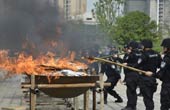
|

|

|

|

|
Today's Top News
Malaysian airliner downed in Ukraine, 295 dead
Xi promotes cooperation on railway across South America
China urges U.S. not to abuse trade system
Couple's $15m to Harvard starts $100m fund for needy
China, US agree to boost cooperation on fighting terrorism
China increases holdings of US securities
China, US agree to boost cooperation on fighting terrorism
BRICS form new development bank
US Weekly

|

|


